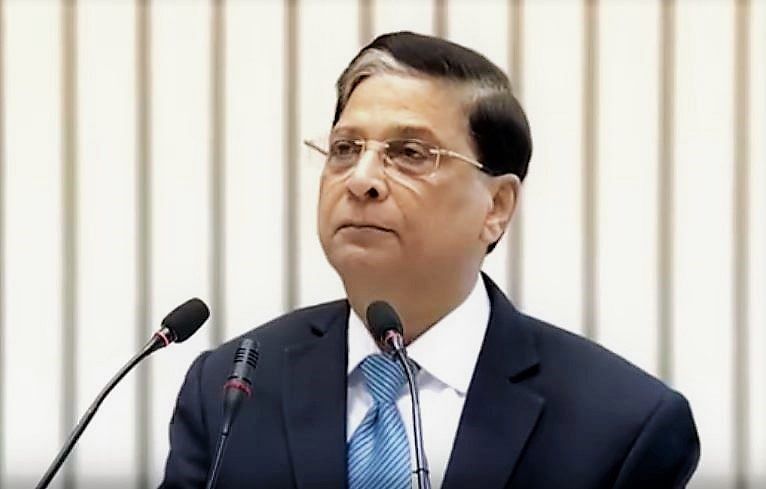A judge of the Supreme Court or the high court can only be removed from the post through impeachment in Parliament.
New Delhi: The Congress-led opposition has decided to submit a motion for the impeachment of Chief Justice of India Dipak Misra to Rajya Sabha Chairman M. Venkaiah Naidu Friday.
The opposition group is reported to be armed with the signatures of 67 Rajya Sabha members to move the motion in Parliament. They only need 50 to introduce the motion.
While the procedure to impeach a judge is clearly laid out, this is the first time a motion is being considered to impeach the Chief Justice of India and legal experts say it is uncharted territory.
Why impeachment?
A judge of the Supreme Court or the high court can only be removed from the post through impeachment. Article 124(4) of the Constitution lays down the guidelines for the impeachment of judges, which, according to law, can only be carried out on the grounds of incapacity or proven misbehaviour.
What is the procedure for impeachment?
1. An impeachment motion is first initiated in the Lok Sabha or the Rajya Sabha.
2. To be introduced, the motion needs the signatures of at least 50 Rajya Sabha members or 100 Lok Sabha members. Once this is done, the motion is presented to the presiding officer of the house — the Speaker of the Lok Sabha or the Chairman of the Rajya Sabha.
3. The presiding officer constitutes a three-member committee to probe the charges against the judge in question. The committee consists of a Supreme Court judge, a high court chief justice, and a distinguished jurist.
4. The committee submits its recommendations to Parliament.
5. The matter is taken up in Parliament, where a motion for impeachment is raised. The motion is put to a vote; if it garners a two-thirds majority in both houses, it is sent to the President. The President then orders the removal of the judge.
Has any judge been impeached in India?
Impeachment proceedings have been initiated against high court judges in the past, but no judge has ever been removed from office.
- In 2016, two attempts to bring an impeachment motion against Justice Nagarjuna Reddy of the Andhra Pradesh and Telangana High Court failed. The allegations against him included issuing death threats to a Dalit civil judge and using casteist slurs.
- In 2015, charges of sexual assault were made against Justice S.K. Gangele of the Madhya Pradesh High Court by a female judge of an additional district court in Gwalior. Following this, 58 Rajya Sabha members moved an impeachment motion against him. The committee set up to probe the matter cleared Justice Gangele of all charges.
- Fifty-eight Rajya Sabha members moved an impeachment motion against Justice J.B. Pardiwala of the Gujarat HC in 2015. It followed a judgment where the judge had said “corruption and reservations have not allowed India to progress”. After the notice, the judge removed the controversial bits from his judgment.
- Justice Soumitra Sen of the Calcutta High Court was the first judge to be impeached by the Rajya Sabha, in 2011. He, however, resigned before the motion was taken up by the Lok Sabha. The main charge against him was misappropriation of funds.
- In 2011, an impeachment motion was brought against Justice P.D. Dinakaran of the Sikkim High Court. There were 16 charges against him, including abuse of office, land-grabbing, and corruption. Dinakaran resigned before the impeachment motion could be carried forward.
- In 1993, Justice V. Ramaswami became the first judge against whom impeachment proceedings were initiated. He was the chief justice of Punjab and Haryana HC, and came under scrutiny for spending exorbitantly on his office. However, the motion failed because of inadequate votes.
What is the procedure for impeaching the CJI?
An impeachment motion has never been brought against an incumbent CJI before, and the procedure remains a grey area. It will be interesting to see how the presiding officer pursues the motion. Will the committee formed to look into the allegations include the second senior-most judge of the Supreme Court? Will the committee to probe the allegations against a CJI include a high court chief justice? The answer to these questions remains unclear at the moment.
